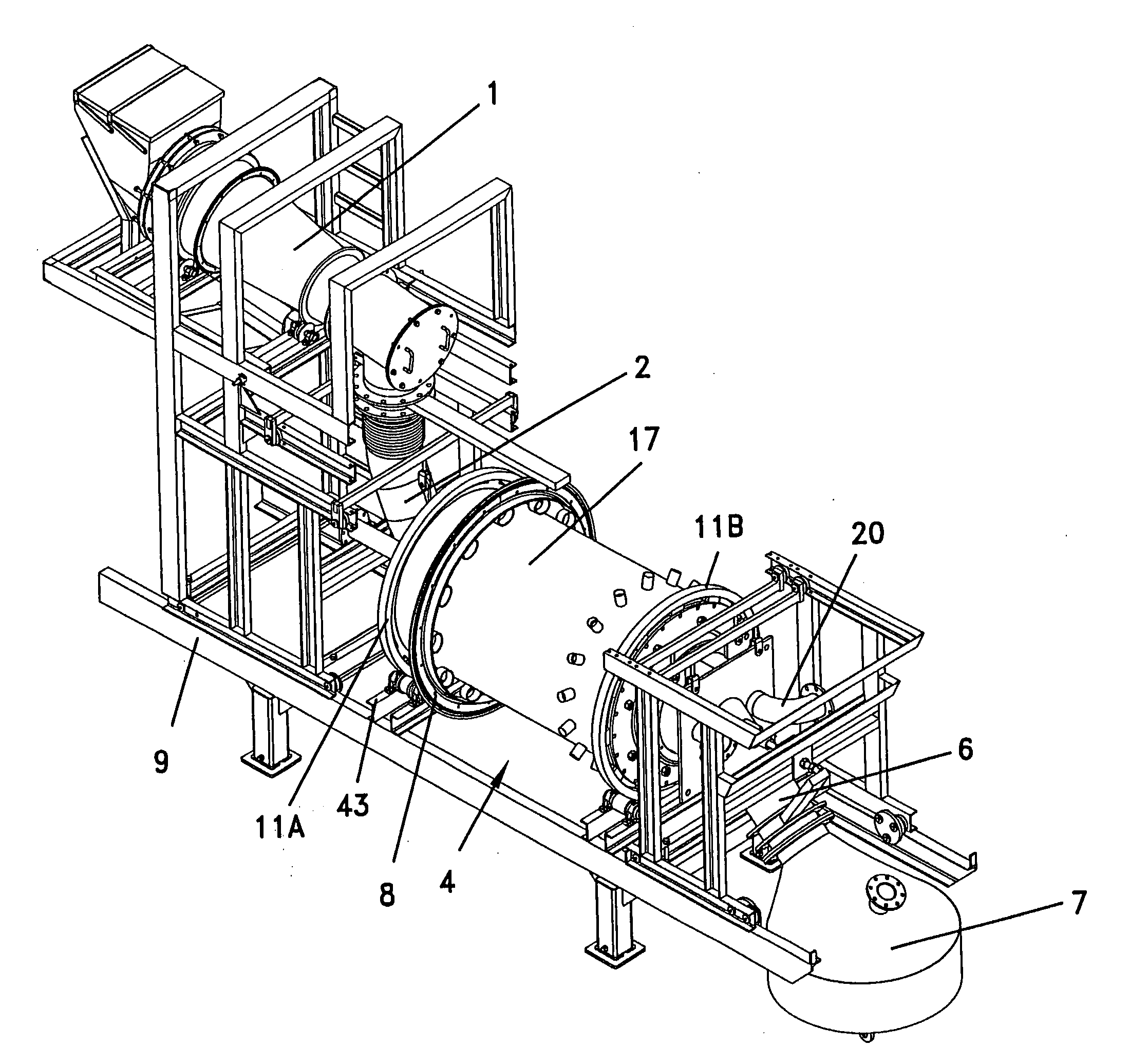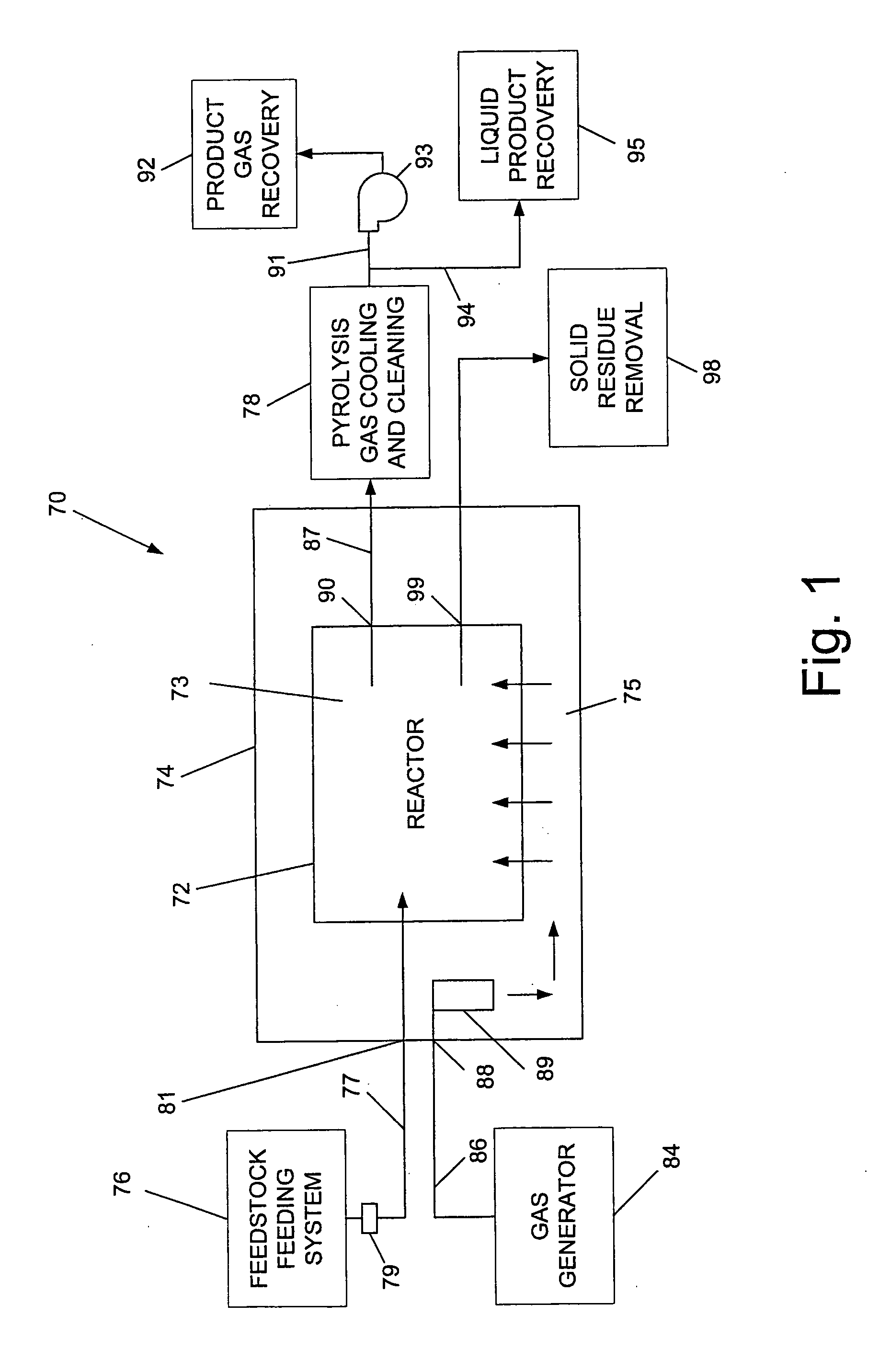Pyrolytic reactor
a pyrolysis reactor and reactor technology, applied in the field of pyrolysis reactors, can solve the problems of destroying the environment, unable to economically viable pyrolysis reactors, and unable to recover discarded tires, so as to prevent environmental pollution
- Summary
- Abstract
- Description
- Claims
- Application Information
AI Technical Summary
Benefits of technology
Problems solved by technology
Method used
Image
Examples
example
[0096]The pyrolytic reactor comprised an inner drum with a diameter of 1 m, and a coaxial outer drum defining a clearance of 30 mm. The circumferential wall of the inner drum was perforated with 5 mm apertures such that the uniform distance between adjacent apertures was 5 mm. The reactor was inclined at an angle of 1 degree downwards. The reactor was rotated at a constant angular velocity of 0.25 rpm. Tire pieces with a size ranging from 200-300 mm and having metal cords protruding from the rubber base were continuously fed at a rate of 100 kg / hr.
[0097]The heat carrier gases, which were directed to the clearance and then into the inner drum interior via the apertures, were the product of gasification of the solid, pyrolyzed carbonized residue. In addition to the solid residue, steam and air were introduced to a gas generator. The gas generator was initially heated by the combustion of a standard mixture of propane and butane from a cylinder, achieving a temperature within the gas g...
PUM
| Property | Measurement | Unit |
|---|---|---|
| size | aaaaa | aaaaa |
| temperatures | aaaaa | aaaaa |
| size ratio | aaaaa | aaaaa |
Abstract
Description
Claims
Application Information
 Login to View More
Login to View More - R&D
- Intellectual Property
- Life Sciences
- Materials
- Tech Scout
- Unparalleled Data Quality
- Higher Quality Content
- 60% Fewer Hallucinations
Browse by: Latest US Patents, China's latest patents, Technical Efficacy Thesaurus, Application Domain, Technology Topic, Popular Technical Reports.
© 2025 PatSnap. All rights reserved.Legal|Privacy policy|Modern Slavery Act Transparency Statement|Sitemap|About US| Contact US: help@patsnap.com



